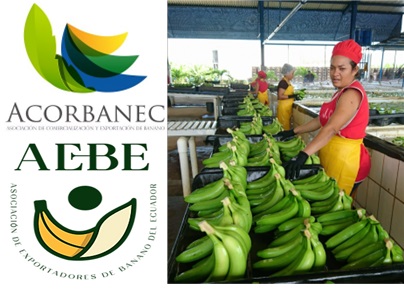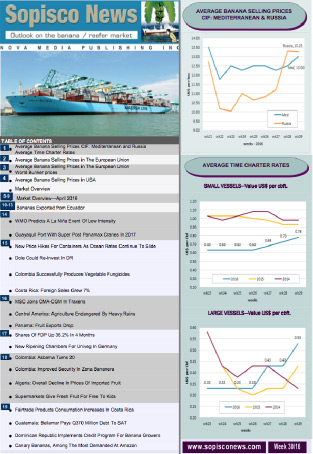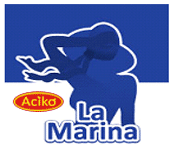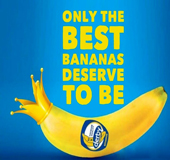Ecuador: Foreign Buyers Resist Paying Higher Prices for Bananas
2023-12-01

According to the Association of Banana Marketing and Export of Ecuador (Acorbanec), banana buyers from the EU and other markets are reluctant to pay the increase in the minimum support price of the banana box in Ecuador, which is paid to producers, after it rose from USD 6.50 in 2022 to USD 6.85 per box agreed on November 6, 2023.
The Ministry of Agriculture made the price official on November 13 with Ministerial Agreement 089.
According to Acorbanec, there would be difficulties in the negotiations to fix sales contracts with banana buyers, particularly from the EU, who still suffer the consequences of high inflation, the fall of the economy and the devaluation of the euro against the US dollar. Added to this is irregular shipping for Ecuadorian banana shipments through the Panama Canal, where transits have been considerably reduced due to problems with the canal's depth due to decreased rainfall caused by climate change and the El Niño phenomenon.
Apart from the long waiting times, which can affect the quality of the fruit, some shipping companies have applied additional values to freight, around USD 297 per TEU in MSC (valid from December 15) and USD 150 per TEU in CMA CGM (from January 1, 2024).
The problem of EU buyers with rising prices has been added by Russian importers facing high inflation of around 7 per cent per year and the decreased value of the ruble versus the dollar.
The difficulties and delays in the Panama Canal could further affect the regularity of banana shipments from Ecuador to Russian ports, which has forced some ships to circumnavigate the American continent through the Strait of Magellan on their way to the Baltic.
The journey becomes about two weeks longer with a high incidence of fuel costs, therefore causing increases in freight, which is now added to the higher value of the banana box.
Acorbanec added that the new price of $6.85, equivalent to $0.1593 per pound, needs to convince European supermarkets and that customers want to negotiate contracts for 2024 with the previous price, which was USD 6.50 per box. "In Europe, contracts are not yet signed because they are reluctant to accept the new price," said Richard Salazar, executive director of Acorbanec, according to local media.
During the negotiations between producers and exporters in October, there were difficulties in setting the minimum price per box of bananas in all three meetings, reaching a consensus only at the third meeting with the exporters offering to pay USD 6.50 and the producers asking for USD 8.01. The price of USD 6.85 was finally agreed upon between the parties, but that price has yet to be accepted by many of the European and Russian buyers.
According to the Acorbanec leader, while negotiations with buyers continue, producers tend to sign contracts for 50% of the production and sell the other 50% on the spot market at a price in force during the day of negotiation.
Throughout 2022, around 70% of growers sold the fruit without contracts and at market price, taking advantage of the high prices paid on the spot market for many weeks.
José Antonio Hidalgo, executive director of the Association of Banana Exporters of Ecuador (AEBE), indicated that the new head of the MAG, Danilo Palacios, must detail the percentage of contracts signed to date by 2024. "Obviously, we always look for everything to be signed as indicated by law. Everything must be contracted, and we hope that the authority will manage that until the end of the year to be able to guarantee formality for 2024," Hidalgo said.
Apart from the disputes over the price per box of bananas, irregularities in shipping and the eventual increase in transport costs, the Ecuadorian banana industry also seems to be under the sword of Damocles of the El Niño phenomenon that could be strong or "historically strong" as announced by the NOAA of the United States, and that could cause floods and destruction of banana farms affecting quality and causing a decrease in exportable volumes.
As a result of the factors above, several European banana buyers have been looking for purchasing alternatives in Colombia and Central America, according to sources in the industry.









